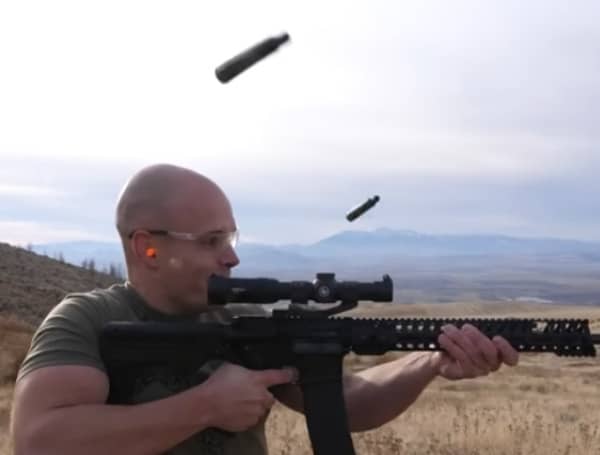The Supreme Court is currently deliberating on the legality of a ban on bump stocks for firearms, a measure that was put in place during the Trump administration.
This ban, implemented as a response to the tragic mass shooting in Las Vegas in 2017, is now being scrutinized by the highest court.
The ban on bump stocks stems from the devastating shooting that took place during the Route 91 Harvest Music Festival in Las Vegas.
Read: Disclaimers Eyed On AI-Created Political Ads In Florida
This tragic event resulted in the loss of numerous lives and left hundreds injured. The perpetrator of the shooting used firearms equipped with bump stocks, devices that enable rapid firing by harnessing the natural recoil of the gun.
In response to the shooting, the Trump administration swiftly moved to ban bump stocks. The ban categorized bump stocks as “machine guns” under federal law, effectively rendering their possession and sale illegal.
This decision was aimed at preventing future tragedies by curbing the availability of devices that can significantly increase the rate of fire of semi-automatic firearms.
The Legal Challenge
The legality of the bump stock ban is now being questioned before the Supreme Court. Michael Cargill, a gun store owner and U.S. Army veteran, challenged the ban, arguing that the Bureau of Alcohol, Tobacco, Firearms and Explosives (ATF) exceeded its authority in reinterpreting the definition of machine guns to include bump stocks. Cargill’s legal representation, the New Civil Liberties Alliance, contends that the power to create criminal laws lies solely with Congress.
Read: Georgia DA Fani Willis Subjected Staffers To Training Where Whites Were Declared “Bad”
The central issue before the Supreme Court is whether the ATF properly interpreted the National Firearms Act, which defines machine guns as firearms capable of firing multiple rounds with a single function of the trigger. The court’s decision will determine whether the ban on bump stocks violates federal law.
The Arguments for and Against the Ban
Supporters of the bump stock ban argue that these devices effectively transform semi-automatic rifles into machine guns, allowing for the rapid firing of hundreds of rounds per minute. They contend that the ban is a sensible measure to enhance public safety and prevent the misuse of firearms.
On the other hand, opponents of the ban maintain that bump stocks do not meet the statutory definition of machine guns. They argue that the devices do not enable automatic firing but instead require repeated manual activations of the trigger. According to their interpretation, the bump stock ban exceeds the ATF’s authority and infringes on Second Amendment rights.
The Impact of the Supreme Court’s Decision
The Supreme Court’s ruling on the bump stock ban has significant implications for both gun control measures and the power of federal agencies. If the court upholds the ban, it would solidify the authority of the ATF to regulate firearms accessories and potentially open the door for further restrictions. Conversely, a decision against the ban could limit the ATF’s ability to classify and regulate devices like bump stocks.
Moreover, the court’s decision may have broader implications for the balance of power between Congress and federal agencies. A ruling in favor of Cargill could reinforce the notion that Congress should be the primary authority in creating criminal laws, requiring greater clarity and specificity in legislation related to firearms.
The Timeline of the Supreme Court Case
The case, known as Garland v. Cargill, is currently being heard by the Supreme Court. It is one of two cases this term that involve gun restrictions and challenges to the power of federal agencies. The arguments put forth by both sides were presented before the court on a designated day, allowing the justices to consider the various legal perspectives.
Once the arguments have been heard, the Supreme Court will deliberate and ultimately issue a decision. This decision will shape the future of the bump stock ban and may have far-reaching consequences for gun control regulations in the United States.
Potential Ramifications of the Supreme Court’s Decision
The outcome of the Supreme Court’s review of the bump stock ban could significantly impact the regulation of firearms and related accessories. A decision to uphold the ban would validate the notion that the ATF has the authority to interpret and classify devices that enhance the firing capabilities of firearms.
Conversely, a ruling against the ban could limit the ATF’s ability to regulate such devices, potentially requiring Congress to take a more active role in defining and legislating restrictions. This could lead to a broader debate on gun control measures and the appropriate balance between individual rights and public safety.
Help support the Tampa Free Press by making any small donation by clicking here.
Android Users, Click To Download The Tampa Free Press App And Never Miss A Story. Follow Us On Facebook and Twitter. Sign up for our free newsletter.

